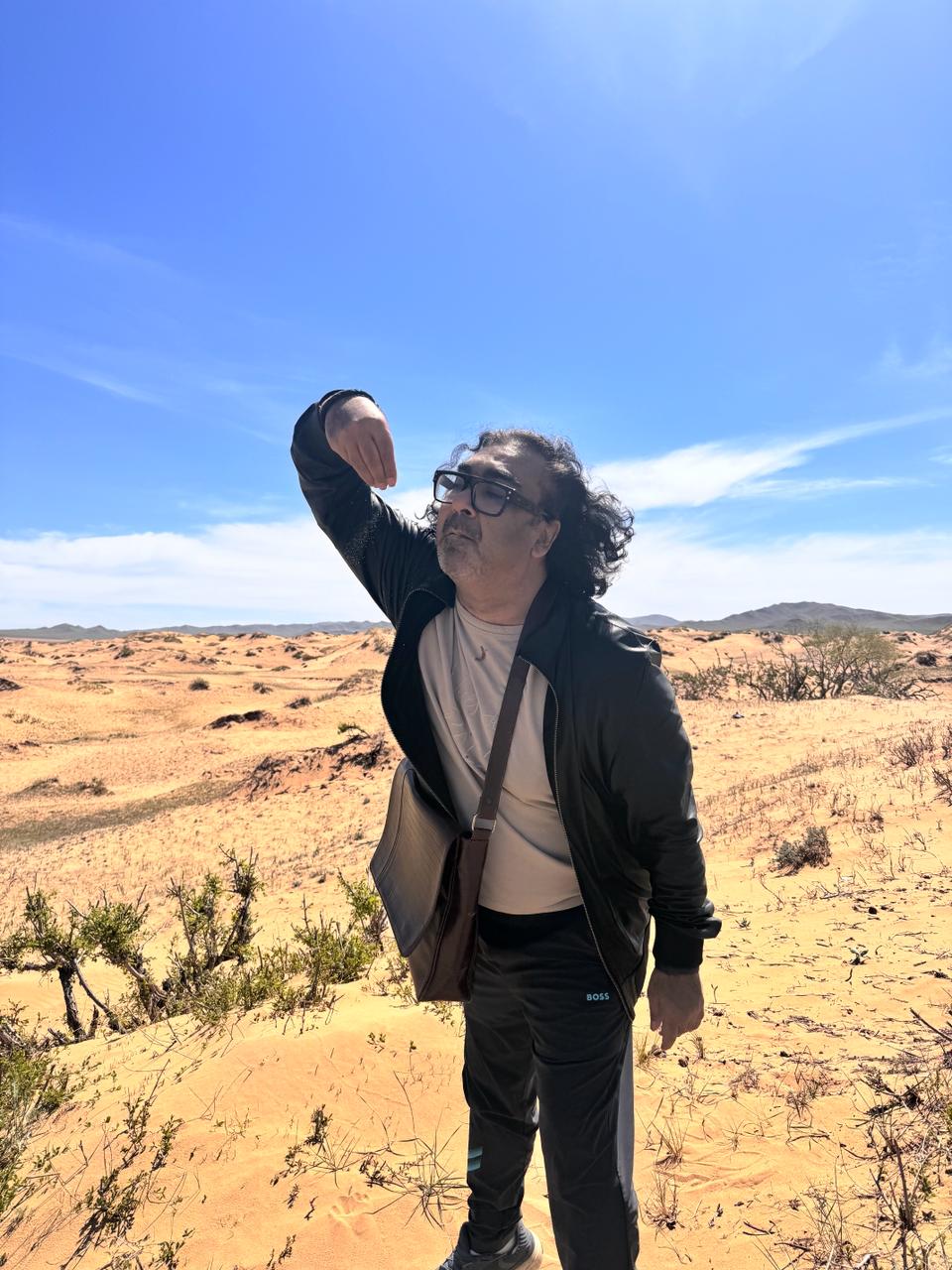The Mongolian journey was well and truly underway as I drove with my local tour guide deep into rural Mongolia. The country is very sparsely populated, and I ventured deep into a very sandy area of the country called Mohtok. This is an area full of sand dunes, and it is believed that the locals here eat the sand. They say that the sand dunes here have sand with medicinal qualities that can cure arthritis and help build strong bones. I shot a video of myself eating the sand.
After that, we moved into a ger, which is a tent-like structure. It is the house of most nomadic Mongolian families. The ger is a traditional dwelling that is very common in Mongolia. It is the most popular form of dwelling in rural Mongolia. It is a round tent made of white, durable, and waterproof material, and it is portable so it can be moved around by yaks. The Mongolian ger has two key components: the wooden framework and the felt cover. The wooden framework is called khana, the central support column is known as uni, and the smoke hole is called toono. It has eight separate wooden poles, each ensuring around 1.5 meters are used as ger frames, with just the central column supporting the entire structure. Without its felt and canvas covering, the naked frame looks something like an umbrella. Once the framework has been erected, it is covered with felt and mounted onto wooden floors. The door is always on the southern side, facing the sun, providing more light inside the windowless home.
Eating Sand in Mongolia
I spent an entire afternoon with a nomadic family in a ger. They served me flat noodles with vegetables and camel meat and gave me Mongolian milk tea to drink, which was salted. I sat on a wooden bed and chatted with them.
The ger is generally divided into three sections: male and female. There is a third section at the back called khoimor. The khoimor is where valuable objects are stored along with a statue of Buddha or a Buddha shrine. Guests are often invited to sit in the khoimor section. The ger districts usually occupy poor-quality land on the outskirts of town. These people raise cattle, breed horses and camels. They shear the camels for their wool, which they sell; they basically live off the land.
I was also served dried curd, which was sweet in flavor. I enjoyed that with some relish. So enjoy the photographs of how local Mongolians live in gers and their day-to-day lives.

























